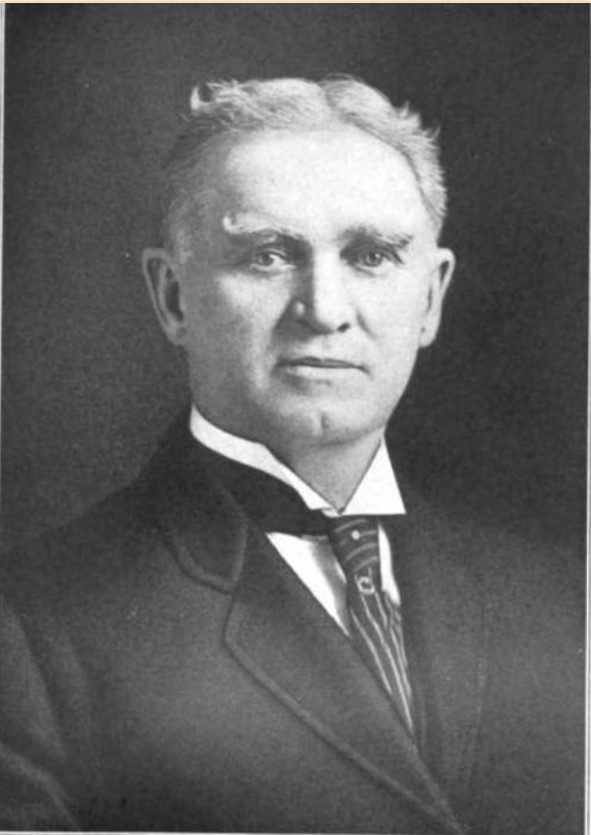
It still spans Kingsbury Run, connecting Cleveland's Kinsman Road neighborhood to the city's historic Jackowo Polish neighborhood. But no one uses the Sidaway Bridge anymore. Not since the 1966 Hough Riots when someone tore out planking from the walkway and attempted to set the bridge on fire. Shortly afterwards, Cleveland officials closed the bridge, and for fifty years it has waited patiently to resume its original purpose of bringing the people from these two neighborhoods together, rather than continuing to keep them apart.
It was not the first Sidaway Bridge. That one–the longest wooden bridge in Cleveland history–was a massive trestle bridge that stretched 675 feet across and 80 feet above the Kingsbury Run, connecting the Jackowo Polish neighborhood on the south side with the then largely Hungarian Kinsman Road neighborhood on the north. It was built as a pedestrian or "foot" bridge in 1909 by the Tom Johnson administration at the urging of three citizen groups from the two neighborhoods who believed, according to a Plain Dealer editorial at the time, that connecting the two communities–then largely white and ethnic–with a bridge would contribute to their mutual commercial and general welfare.
That bridge–initially called the Tod-Kinsman Bridge, but, within a year of its opening renamed the Sidaway Bridge after the new approach road that had been created during its construction–served that purpose for more than twenty years, and as well provided a convenient shortcut for folks on the north side of the Kingsbury Run to walk to Dahler's, a popular beer garden in the Jackowo neighborhood. In the late 1920s, however, the bridge's braced wooden framework became an obstruction for the Nickel Plate Railroad, now owned by the Van Sweringen Brothers, who desired to build several car barns at this location in Kingsbury Run for their Shaker Heights rapid transit line. The city and the railroad agreed that the trestle bridge would come down and that the railroad would bear the cost of replacing it with a new bridge, one that would allow for continued pedestrian travel between the Jackowo and Kinsman Road neighborhoods, while at the same time creating open space below for the new rapid transit buildings.
The new Sidaway bridge was designed in 1929 by Fred L. Plummer, a talented Cleveland engineer, who was both a professor of engineering at the Case School of Applied Science (later called the Case Institute of Technology) and a design professional at the engineering firm of Wilbur Watson and Associates. Plummer designed it as a suspension bridge, a popular type of bridge form in the United States in the 1920s. Using an intricate series of weight-bearing steel cables, suspension bridges allow for great expanses of bridge deck with a minimum number of support towers. Completed in 1930, the new Sidaway Bridge was the first and remains to this day the only suspension bridge ever built in Cleveland.
Just a few years after the new bridge opened and pedestrian travel across the Kingsbury Run resumed, the Run became locally notorious as the result of a series of grisly murders, known as the Cleveland Torso Murders, which occurred between 1935-1938. At least 12 men and women were murdered in the stretch and, in at least four of the murders, the victim's mutilated corpses were dumped at various locations there. On top of this, just several years later, in June 1942, as the memory of the Torso Murders was fading, the body of another victim was found on a hillside under the Sidaway Bridge.
Notoriety did not depart from this area of Cleveland even when the Kingsbury Run murders came to an end. In the next three decades, a new type of notoriety for the two neighborhoods arrived, when the Kinsman Road neighborhood transitioned from one that had been largely white and ethnic to one that was largely African-American. Portions of that latter neighborhood had severely deteriorated housing and, in the years 1955-1959, under a federal urban renewal program, 130 acres, between East 71st and East 79th Streets, was cleared of that housing and the 650-unit Garden Valley subsidized housing project built. An increased number of African-American children began using the Sidaway Bridge to walk to Tod Elementary School, the public school in the still largely white and ethnic Jackowo neighborhood. And now the Sidaway Bridge connected a black and a white community in a city where, in the early 1960s, racial tension was mounting.
In 1966, this tension erupted in the form of the Hough Riots. During the riots, the Sidaway Bridge became a flash point, literally, when someone (likely from the Jackowo neighborhood) removed planking from the bridge and attempted to set it on fire, preventing anyone, particularly residents of the Kinsman Road neighborhood, from using it. Rather than repair the bridge and keep it open to the public, the City of Cleveland elected instead to close it. A decade later, that decision came back to haunt the city, when, in 1976, federal district court judge Frank Battisti, in the course of issuing his busing order to desegregate Cleveland's public schools, cited the closing of the Sidaway Bridge as evidence that city and school officials had worked in concert to segregate the schools on the basis of race.
Fifty years have now passed since the Sidaway Bridge was closed during the Cleveland Hough Riots. All that time the beautiful suspension bridge erected in 1930 has patiently waited for repair and reopening. From time to time, such proposals have been made, but to date they have come to naught. Until it is repaired and reopened, it cannot serve the purpose for which it was built: to bring the people of the Kinsman Road and Jackowo neighborhoods together for their mutual commercial and general welfare. And until that happens, it will remain a symbol of the mid to late twentieth century troubles that separated these two Cleveland neighborhoods and a reminder that they have perhaps not yet bridged that gap.
Images











